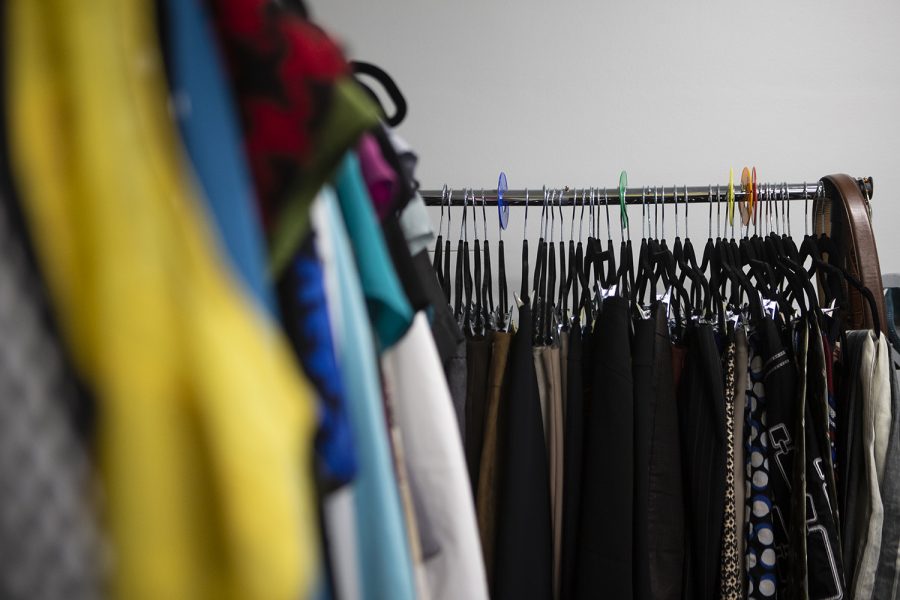University of Iowa Clothing Closet turns 1 year old
Campus Clothing Closet student organization keeps its momentum from a strong spring to an even stronger first week in its second year of giving away free professional attire.
The Clothing Closet in the IMU is pictured on September 19, 2019.
September 19, 2019
What started as a group of University of Iowa students’ idea to provide accessible business professional clothing to other students has now developed into a full Clothing Closet with hopes for expansion after a successful first year.
The idea of having a Clothing Closet at the university first came into being two years ago when it was included on UI Student Government election platforms, and by May 2018 it was passed as a student organization.
“There was a lot of support for the resource, and [the University of Iowa Student Government has] been incredibly supportive of our mission,” said Executive Director Lindsey Meyer of the Clothing Closet.
The organization has seen its success grow ever since it began last fall in the Iowa Memorial Union, she said.
“We served over 130 students this past spring,” Meyer said. “We had a total of 300 clothing items taken, which was an 85 percent increase from our first semester.”
As knowledge of the Clothing Closet has increased around campus, so has its business, Meyer said.
“We’ve seen immense growth just this semester with the number of clients that we’re serving in the first week we’ve been open and in the amount of items being taken,” Meyer said.
Amid the organization’s rapid growth, it is already looking to expand, the Clothing Closet team said.
“One of our more immediate needs is more storage space based, especially with a large number coming in now compared to last year,” said Joshua Bolen, associate director of the Clothing Closet.
Seventy-five articles of clothing were given away to 30 clients in the first week of business this semester, nearly one-fourth of last semester’s total, Bolen said.
Improving their inventory system, finding a second location, and growing its business partnerships are all on the horizon for the Clothing Closet, he said.
RELATED: Clothing Closet brings accessible professional attire to UI students
“We’re trying to get [partnerships] like discounted tailors and discounted dry-cleaning,” Bolen said.
Volunteers play an important role from within for keeping the closet running and growing, the team said.
Audrey Mumford, the volunteer coordinator of the Clothing Closet, has volunteered since the very beginning of the organization.
“I wanted to have more opportunities to serve students specifically, and the Clothing Closet was the perfect choice,” Mumford said.
She said her own experience with the difficulty of finding affordable professional clothing makes the experience of helping students through the Clothing Closet more enjoyable.
First-year students and first-generation students are common clients for closet.
“The biggest thing we’ve learned from our demographics is that freshmen coming in are the ones that are really using us as a resource right off the bat,” Mumford said, adding that many freshmen forget their professional clothing or do not realize they will need it.
Meyer said 37 percent of their clients have been first-generation students, compared to first-gens only making up 23 percent of the student body.
The Clothing Closet always makes an effort to point out that no matter who is using their service, the clothing is always free, the Clothing Closet team said.
“A lot of people think it’s a library system. We don’t have people borrow clothes and then return it – once you come in and take clothes from the closet, they’re yours to keep,” Mumford said.
Meyer said that in the past year, the Pomerantz Center and the Tippie College of Business are some of their key funding contributors. Both the undergraduate and postgraduate student governments provide funds for the organization, as well.
“The processes of the Clothing Closet are definitely dependent on the funding we receive. We wouldn’t be able to serve students in the capacity that we can. We wouldn’t be able to do the advertising, marketing, and high-quality clothing,” Meyer said.





